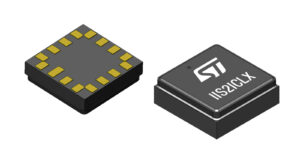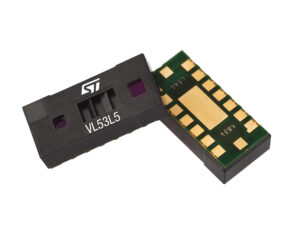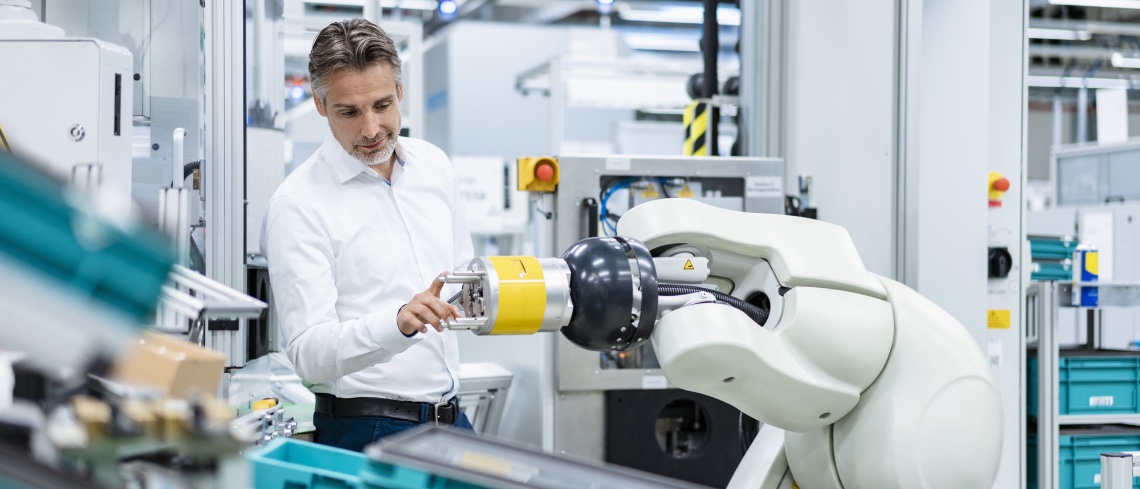Register to attend ST’s digital booth at the SENSOR+TEST 2021 Digital conference
ST will introduce new applications and help engineers stay abreast of the latest trends shaping industrial sensors during the SENSOR+TEST 2021 conference that will take place from May 4 to May 6, 2021. The event is traditionally held in Germany, but the global pandemic is moving all exhibitors online. Hence, it was important for our teams to focus on the latest technologies that will impact engineers and decision-makers to make the conference more relevant. Among other things, ST will hold a series of forums, experts will be available for live chats, and videos will demonstrate critical technologies. In preparation for the SENSOR+TEST 2021, The ST Blog wanted to shine a light on the new ways companies use our inclinometers, time-of-flight sensors, and audio accelerometers.
SENSOR+TEST 2021: Inclinometer
Measuring Angles with the IIS2ICLX

When attending a conference like SENSOR+TEST 2021, it’s easy to get bombarded by buzzwords like “smart industry”. Figuring what is truly smart, however, is another problem. Hence, ST aims to help engineers focus their attention on solutions. For instance, how can companies create smarter infrastructures? How can cities monitor traffic by capturing vibrations across a bridge? How can countries monitor the health of their roads or buildings? One answer comes from the IIS2ICLX, the industry’s first inclinometer with a Machine Learning Core. Indeed, embedded systems demand greater accuracy and greater energy efficiency, which are usually contradictory constraints. However, the finite state machines and decision tree of the device enable the creation of machine learning applications at a fraction of the power consumption, while the new sensing element offers an ultra-low noise (15 µg/√Hz) and an offset change of less than 0.075 mg/ºC temperature change.
Measuring an Earthquake in Milan
The IIS2ICLX is a two-axis linear accelerometer with a digital output. ST engineers overhauled both MEMS and ASIC to focus on performance. For instance, the device has such an excellent signal-to-noise ratio that, in our labs, the IIS2ICLX picked up an earthquake happening in Milan, Italy, on December 2020 (3.9 on the Ritcher scale) roughly four kilometers from the epicenter. Hence, although customers primarily use the device to measure static or quasi-static angles, some employ it to monitor low-frequency vibrations. Additionally, the ceramic package and extended operating temperature range (-40 ºC to +105 ºC) mean that the inclinometer will pass the most stringent industrial requirements. It is thus easy to understand why the IIS2ICLX was one of the honorees at the CES 2021 Innovation Awards.
Taking the Next Steps
To start experimenting with the IIS2ICLX, developers can grab the STEVAL-MKI209V1K adapter board and its STEVAL-MKI109V3 motherboard. ST even offers a tilt angle detection demo on the Machine Learning Core Repository on GitHub. The application shows how being able to process data through the decision tree and take action without waking up the microcontroller saves a lot of energy.
[embedyt][STEVAL-MKI109V3] https://youtu.be/w6CwzwtrAbE[/embedyt]
SENSOR+TEST 2021: Time-of-Flight Sensors
Measuring Presence with Time-of-Flight Sensors

Trying to assist attendees looking for solutions also means taking a different approach to time-of-flight sensors. Our family of FlightSense devices remains widespread, and we will soon release the VL53L5, our first ToF device capable of monitoring 64 different zones, which will be available at distributors on July 2021. However, although engineers understand how such products work, many may not always know how or where to use them. Hence, ST is adopting a different take by focusing on new applications that utilize our FlightSense devices. For instance, our experts will take advantage of SENSOR+TEST 2021 to talk about volume measurements, object detection, and more.
Volume Measurements
VL53 FlightSense devices all use a laser with a 940-nm wavelength that’s impervious to color. As a result, they are often present in volume measurement systems since the devices work regardless of the solid’s or liquid’s color, or lack thereof in the case of something transparent like water or hand sanitizers. Additionally, since the device has a low power consumption, it is compatible with battery-powered applications. Using a ToF device is also far more cost-effective than a camera. Engineers can thus add a myriad of them without blowing up their bill of materials. Moreover, the VL53L1CX/L1CB sensor’s ability to modify its field of view means it can focus on a narrower angle for greater accuracy. Hence, in a vending machine, one sensor can monitor a single distribution line without mistakenly tracking adjacent products.
Multiple Objects Detection
A new crop of applications is using ToF sensors for multiple object detections. For instance, thanks to their histogram capabilities, the VL53L3CX and VL53L1CB can distinguish between foreground and background objects. Such a feature is essential if engineers need to use thick cover glasses to protect their product from the environment. Thanks to multiple objects detection, developers can calibrate their application to discriminate against the glass and focus on what’s beyond it. And with the VL53L5 supporting 64 independent zones, engineers can track complex movements or people a lot more accurately, thus opening the door to new applications.
SENSOR+TEST 2021: Audio Accelerometer
Filtering Audio with the LIS25BA
The third solution we wanted to highlight on The ST Blog revolves around the new ways engineers use noise cancellation. It is common for teams to use a device like the LIS25BA. In bone conduction headsets, the motion sensor detects vibrations traversing the jaw bones and a signal processing algorithm uses this signal to distinguish between the ambient noise and the speaker’s voice. Inversely, it’s possible to place the LIS25BA on a noisy appliance, such as washing machines. Hence, when users speak a wake-up command, the system can filter out the vibrations to increase accuracy.
New Noise Canceling Solution for Cars
Besides traditional noise-canceling applications, ST sees an increasing number of engineers interested in using the device in cars. Indeed, manufacturers invest a lot to block out engine, wheel, and exterior noises for a more pleasant experience. However, many are now realizing that they can place multiple LIS25BAs around the cabin and use the car’s speakers to create a noise-canceling system similar to what’s in headphones today, meaning that an inverse signal cancels unwanted sounds. Until now, engineers had to wrestle with cost and engineering challenges. However, the LIS25BA is cost-effective and ST is about to release an automotive-grade version of the device soon. Hence, designers can now create noise-canceling systems previously out of reach.
